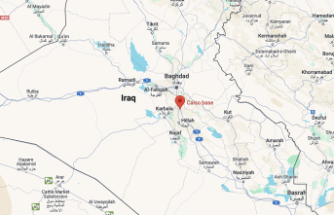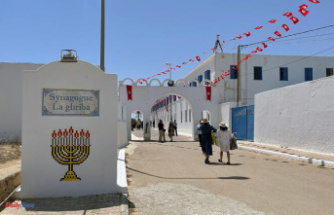thousands of millions of years, something huge crashed against the dark side of the Moon, leaving a giant pit of 2,500 km wide and 13 km deep. The basin Aitken is, in effect, the crater more ancient and profound than our natural satellite, and also one of the largest in the Solar System.
For decades, researchers have thought that the huge basin was created by a collision with an asteroid very large and very fast. And that an impact like it would have torn the moon's crust, interspersed with fragments of his garment across the surface of the crater, a treasure trove of information about the Moon that scientists could study if someone sent a probe there.
Were the chinese the first to arrive at the basin Aitken. What did early this year with its lander Change 4 and its rover Yutu-2, which since then has been collecting and analyzing samples of rock collected from the very bottom of the crater. And, to the surprise of the researchers, there is no trace of the mantle of the moon.
In a new study, published in Geophysical Research Letters, chinese scientists dismounted, therefore, the theory of a frontal impact, leaving the origin of the giant crater enveloped in a halo of mystery.
Materials of the mantleAfter analyzing the minerals present in six plots of different ground in the bottom of the basin Aitken, the researchers argue that the composition of the crater coincides exactly with that of the moon's crust, not the mantle, which suggests that whatever hit the Moon thousands of millions of years did not do so with sufficient force as to spray the part of his bowels to the surface.
"we're Not seeing the materials of the mantle in the place of landing, which was what we expected," says Hao Zhang, one of the authors of the study. But if these findings rule out the possibility of a direct collision, what was it then that created the largest crater of the Moon?
During the study, the researchers used a technique called "espectoscopía of reflection" to identify the minerals based on how their individual grains reflecting the visible light and near infrared. Using the instruments of the rover Yutu 2, the researchers conducted tests of reflectance in six patches of different ground during the first days after the landing of Change 4, up to a distance of 54 metres from the lander.
the result was that the mineral composition found by the team of scientists coincided with that of the moon's crust, and that was hardly compatible with the idea of a giant asteroid crashing at full speed against the hidden face of the Moon, that would have dispersed fregmentos of mantle by all parties.
Slow and glancingscientists, however, do not offer on your study any alternative solution, which leaves the origin of the crater shrouded in mystery. Previous studies already spoken of the possibility of a "collision of slow", in which an asteroid of low-speed, might have beaten the hidden face of our satellite with an angle of approximately 30 degrees, forming the crater, but without disturbing the mantle. In other words, an impact slow and "glancing". That study, published in Science in 2012 is based, however, only in simulations, without any other proof to back it up.
let us Remember that in the past month of June, a team of researchers from the University of Baylor, Texas, discovered, just below the Basin Aitken, a huge mass of metal of about 50,000 square miles . "Whatever it is and wherever it comes from -then said Peter B. James, professor of geophysics planetary and the lead author of that study - that huge and dense mass sank to the base of the basin to more than 800 meters."
What is certain is that the chinese study has forced us to put into question what was thought until now. And the only truth, today, is that for now no one knows what really happened.
Date Of Update: 26 September 2019, 19:02











